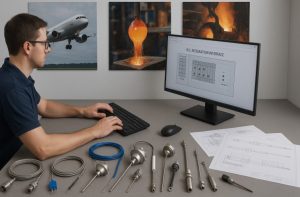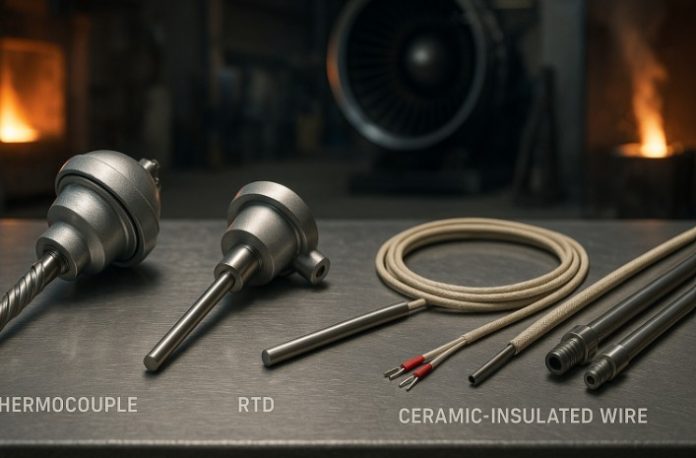Table of Contents
High-temperature environments present a unique set of challenges for industrial processes. Whether in aerospace, automotive, metal processing, or energy production, reliable and accurate temperature monitoring is critical to both performance and safety.
High-temperature sensor components are designed to withstand extreme thermal conditions while delivering precise measurements over prolonged periods.
The Role of Temperature Sensors in Extreme Conditions

In industrial settings, temperature fluctuations can significantly impact equipment performance, product quality, and operational efficiency.
Sensors designed for high temperatures must provide accurate data while withstanding heat, vibration, corrosion, and sometimes even radiation.
Applications such as turbine monitoring, exhaust gas analysis, and furnace control depend on the long-term stability of these components.
Thermocouples and resistance temperature detectors (RTDs) are among the most common types of temperature sensors used in such environments. However, not all thermocouples or RTDs are suitable for extreme heat.
Special materials, insulation types, and construction methods are required to ensure their reliability at high temperatures.
Materials Make the Difference
The performance of high-temperature sensors is largely determined by the materials used. Inconel, platinum, molybdenum, and alumina are some of the preferred materials in high-heat environments.
These materials can tolerate prolonged exposure to temperatures ranging from 600 °C to well above 1600 °C, depending on the application.
Precision Engineering for Harsh Applications
Design and manufacturing precision are just as important as the materials themselves. Sensor components must be produced with tight tolerances to ensure accuracy and repeatability.
Specialized joining techniques, such as laser welding or diffusion bonding, are often used to connect parts without compromising integrity at high temperatures.
Calibration is another key factor. High-temperature sensors must be calibrated against known standards to ensure accuracy under operating conditions.
Drift over time is a common issue at elevated temperatures, so sensors may also include compensation features or require periodic recalibration to maintain performance.
Customization and Integration

Different industries require sensor solutions tailored to specific environments. A sensor used in a jet engine will differ significantly from one designed for glass manufacturing.
Sensor suppliers must therefore offer customization options, ranging from cable lengths and connector types to custom probe geometries and surface finishes.
Integration with control systems is also vital. Many sensors are designed to interface directly with PLCs (programmable logic controllers) or digital data acquisition systems.
Compatibility with different communication protocols ensures that data can be monitored, recorded, and acted upon in real time.
Sourcing High-performance Components
When sourcing high-temperature sensor components, choosing a supplier with proven experience and technical knowledge is essential.
Companies like https://kamet-trading.com/ specialize in high-quality temperature solutions designed for demanding industrial applications.


